Neither Scrum, nor agile for that matter. After a big year coming to an end that saw the end of one adventure (benext) and the beginning of another (octo), I participated in a few events. The context? Transmit, share, the vision, the editorial line of our agile approach. I understand this might seem pretentious. I’m working on it. Once again I’m doing this for myself. And once again by doing it I realized many things. Here are the slides I recently used, with associated comments.
Supplements
- This is not scrum / agile, the conference (video/english)
- Agility, critical look at recent years to properly start the following ones (text prior to the presentations)
1 This is not Scrum
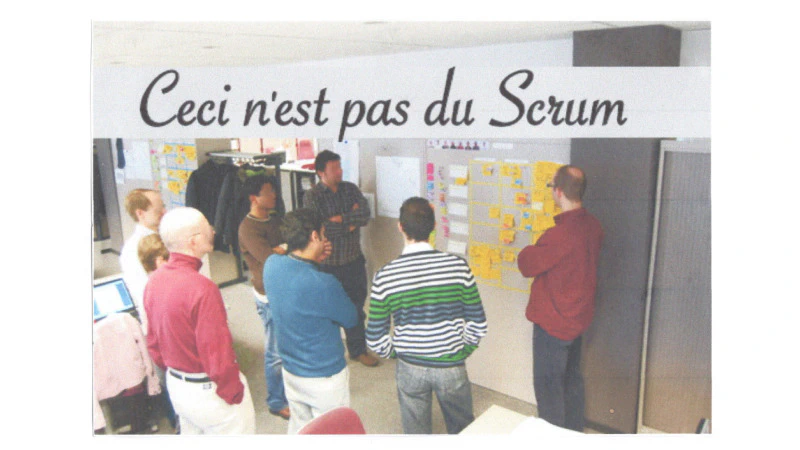
You quickly understand the reference to Magritte’s painting (“this is not a pipe”).
"The famous pipe, how much they reproached me for it! And yet, can you stuff my pipe? No, of course not, it's just a representation. So if I had written under my painting 'this is a pipe,' I would have lied!" -- Magritte
2 Love/Hate agile

It’s been quite a while since we’ve been hearing incessant doomsayers who want to tell us that Agile, or Scrum (which corresponds to a certain agile environment), are dead. No, still not, as long as the world hasn’t truly changed in nature, agile, as a performance tool, is still very much present.
But it’s certain that today there’s little “agile” as we’d like to see it. Having become mainstream, Agile is misused.
And since you “must” be agile, many wrap themselves in it by mimicking it to stay relevant.
3 Not discussing “basics”
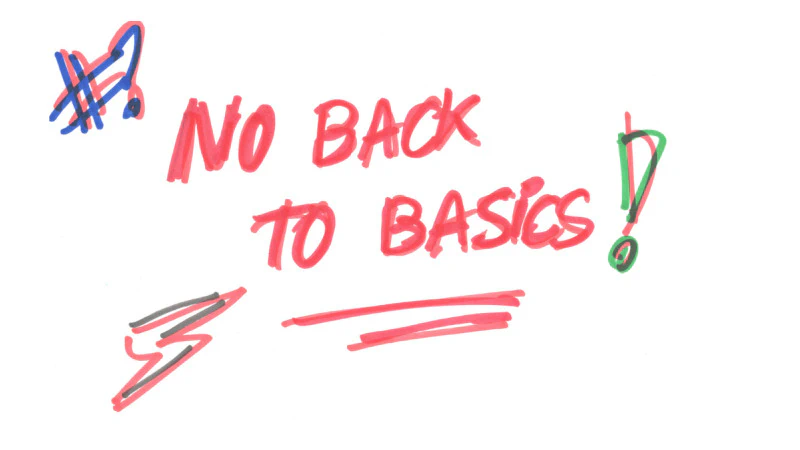
In this mainstream agile we’re constantly told: back to basics. Every time I hear it, I discover that it hides: “let’s pretend!”, “let’s give the appearance of…”. The basics are too often in the mouths of those who call upon them as simulacra to simplify (in the bad sense) their lives. Not making the effort, not giving ourselves the means for the approach, even, and especially, avoiding it, simulating it.
4 The basics are not essential
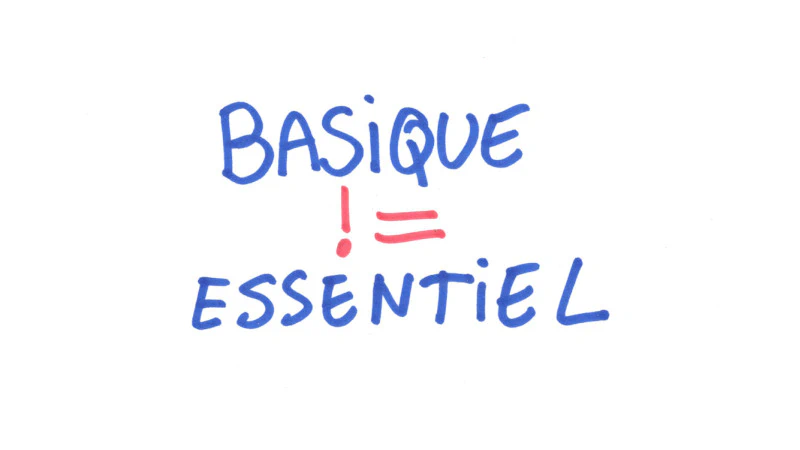
The basics as they are formulated by most of those who call upon them are not essential, since they are only decorum. Spending all your energy pretending is a source of disappointment. These basics are just labels.
5 Foundations are essential
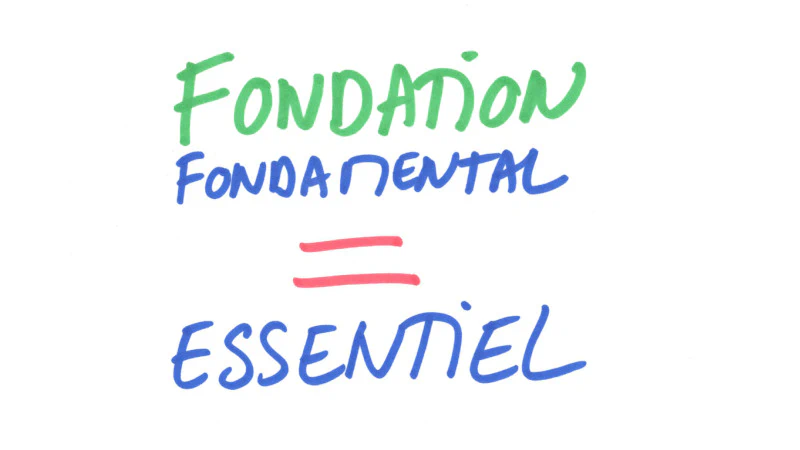
Foundations are essential to a good agile approach. But what are they?
6 Basic or foundation (1)?
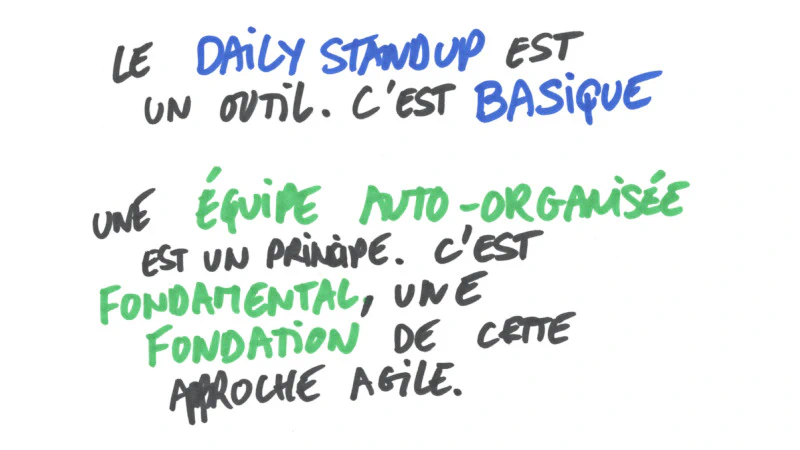
The daily standup is something basic. The importance lies in synchronization and feedback within the team. Often the daily scrum is just for show. It doesn’t matter to have a daily standup if the team regularly synchronizes and gives each other feedback. Daily standup is a convention (and a daily ritual to promote its regularity and realization). Conversely, having a self-organizing team isn’t displayed. But here we suddenly speak of substance (and no longer form). Having a self-organizing team is fundamental to an agile approach.
7 Basic or foundation (2)?
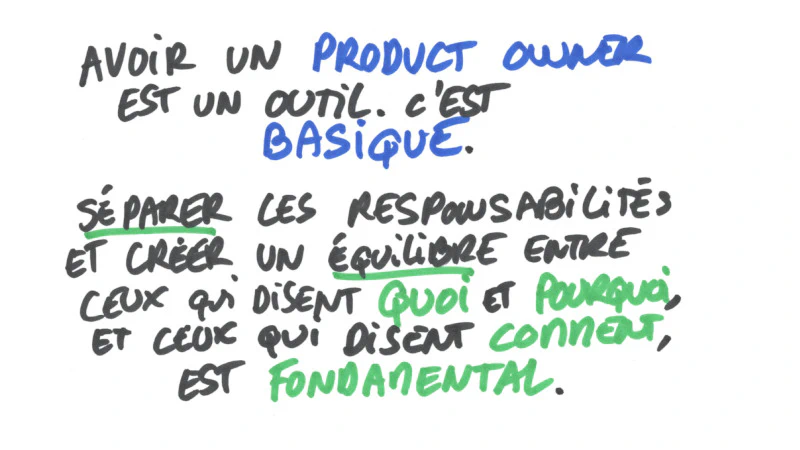
Displaying the presence of a product owner is basic, and doesn’t augur anything. Again it’s form not substance. On the contrary, often in a framework like scrum it’s fundamental to properly share and balance responsibilities between those who decide the WHAT and the WHY and those who decide the HOW. Call it whatever you want, but that’s what’s important in a scrum-like approach.
In the famous marketing assemblage called SAFe that stole and assembled without rhyme or reason everything it could to facilitate this caricature of agile, there’s this PI Planning (which we used to call Quarterly Planning for example). In this PI Planning there’s a visual board of dependencies. And everyone congratulates themselves that this board is bristling with threads in all directions. The basic thing is to create this board. The foundation is to work on reducing these dependencies (which is a major issue of agile at scale).
8 Dilettante syndrome

Another annoyance, dilettante syndrome, you could pick as you please from the arsenal of agile tools and rituals, to constitute your own little kit. It’s false as you understand it. Further down I’ll tell you it’s true, but with a very different approach from what I encounter in the vast majority of cases. Picking where you please appears in the field mainly as a way to avoid really committing to it, to sprinkle, and again just in form. It’s not new, it doesn’t change.
9 Coherence
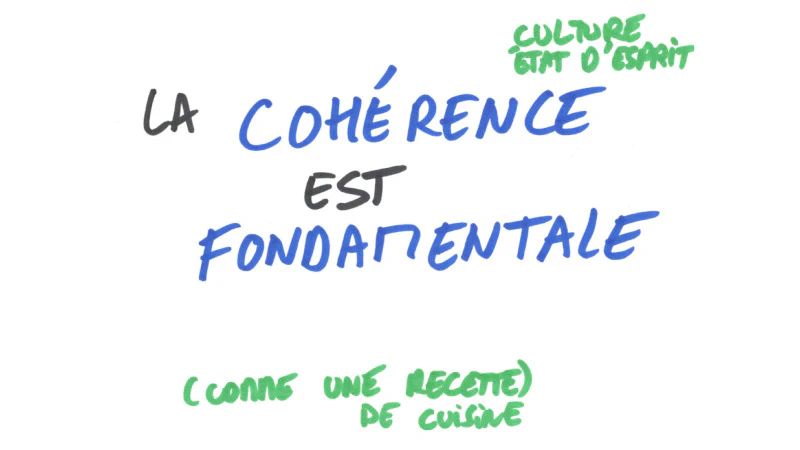
At minimum one should pick with coherence. And coherence doesn’t come from form (the basics), but from substance (the foundations). And principles balance, complement each other. For true performance, one should invite to your little party a significant small set of foundations. Self-organization makes no sense if there isn’t a capacity to provide a framework and direction, not precise directives; emergence makes no sense if we’re not capable of introducing value-based prioritization, etc.
10 Copying is not…
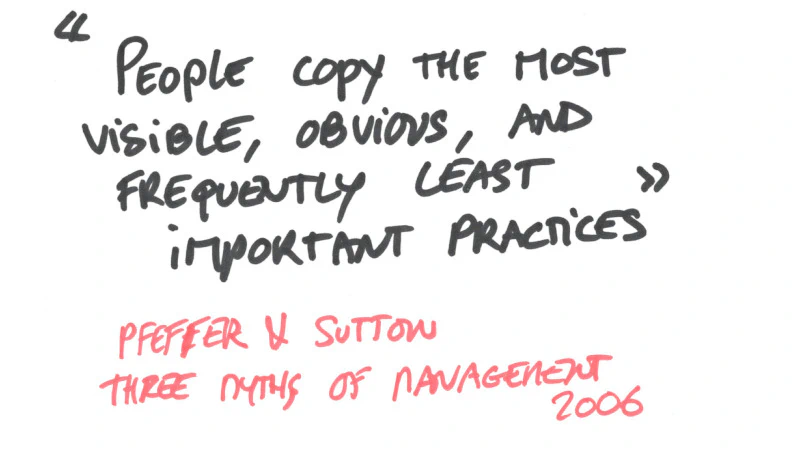
Great weakness of management (of leadership) this 2006 study tells us: “people (managers, study dedicated to managers) copy the most obvious practices, the most visible, which are frequently the least important”.
There it all is: no return to basics (which is a way to disguise these least important practices, to sugar-coat the pill).
It all is: we’re pretending.
11 Why do the fake?
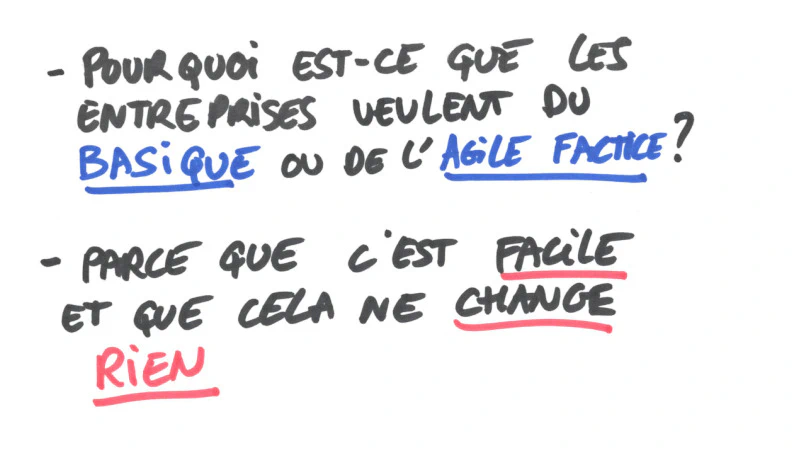
But then, why spend this energy pretending? But because all these surface actions allow these companies to pretend without changing anything. It’s without changing anything that’s important and that’s sought after.
12 And why is it a trap nonetheless?
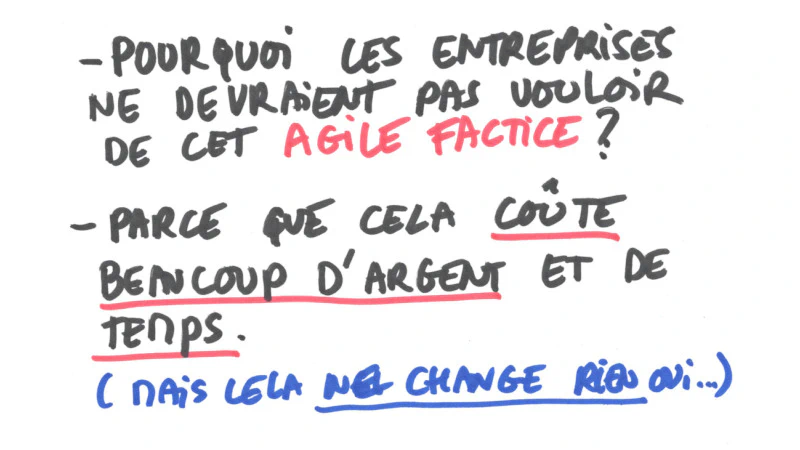
Unfortunately pretending, changing nothing, simulating, being charlatans. Well that takes time, money, sometimes even inventiveness! It’s not neutral in energy. But remember changing nothing, it’s not an absence of objective, it’s an objective! When we change nothing, we think we have a much better chance of knowing what will happen. It’s not true, but it’s understood that way.
13 Why not tackle the foundations?
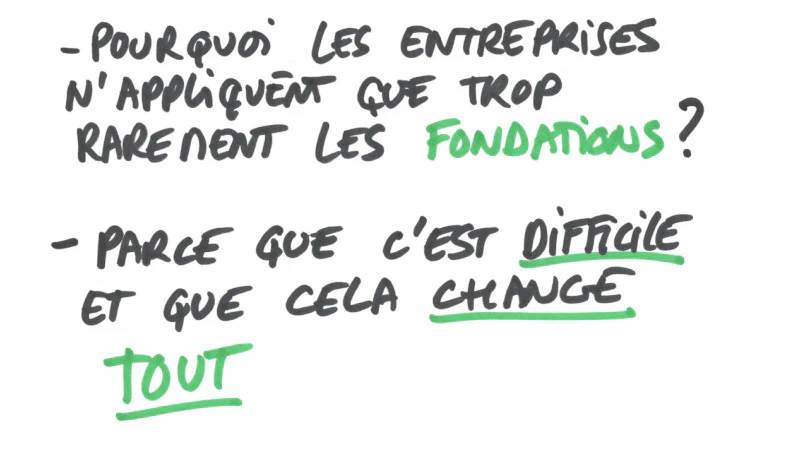
Because in addition to the energy and time it requires, it’s difficult. Simulating is nonetheless much easier (even if long and costly). We pay to buy ourselves non-change. Changing foundations is another story. We don’t know what will happen. It questions our foundation. It’s what we sometimes evoke in change when speaking of liminality (in a rite of passage). That uncomfortable moment of the in-between states. By changing the foundations, that’s what we’re rushing into.
14 Complicated to explain? Easy to do.
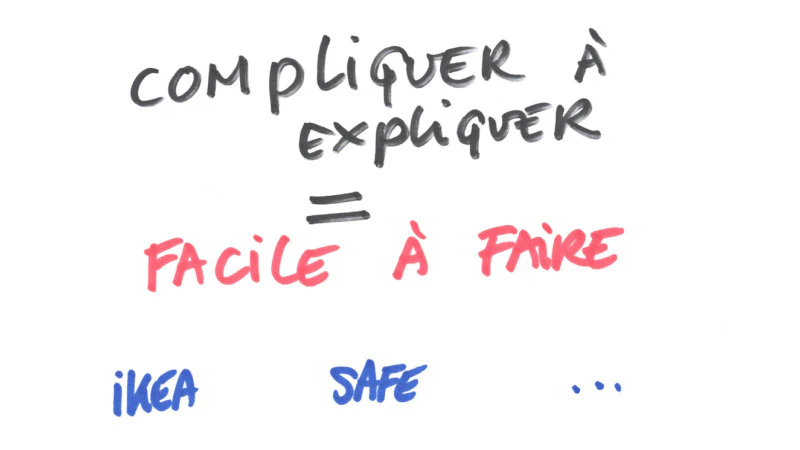
All these reflections on the difference between basics and foundations highlight an interesting effect. What’s complicated to explain is often easy to achieve. Like IKEA furniture, whose instructions must be followed point by point, meticulously, to see it emerge. But it’s relatively easy to achieve. Like, again, this SAFe, which is presented to us in the form of a large poster whose every element must be followed precisely (which nobody does) and which seems to contain the entire agile mythology. All this complication to allow you to do superficial things while giving you the impression of delivering you from substance. Or better yet by delivering what will make people believe you’re doing substance, because it saturates the space with form.
How reassuring!
15 Easy to say, difficult to achieve
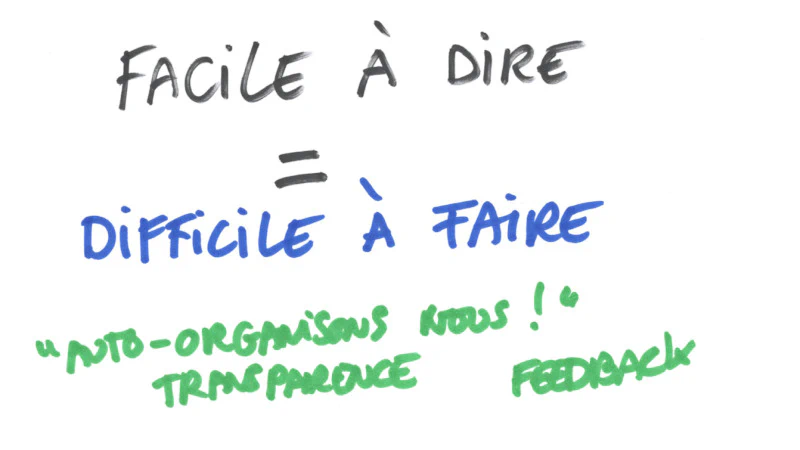
Conversely, in our world many things easy to say prove difficult to achieve. The underlying complexity isn’t visible at first glance. And as always responding to complexity requires emergence, and the solution will be unpredictable. “Let’s let emerge”, “Let’s give autonomy”, “let’s engage teams”, etc., etc., it’s far from easy. But that’s where the real performance lever often lies. Because we’re responding to complexity, it’s difficult to grasp, and unpredictable.
Two reasons to cool off certain people.
16 “Companies over twenty years old”
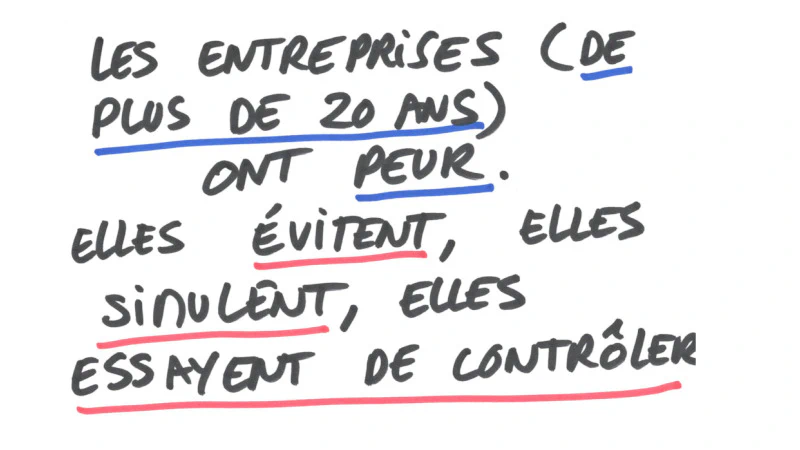
These people hostile to complexity often populate companies over twenty years old (it’s an arbitrary definition on my part). These companies that were often born in another era, where complexity wasn’t as present. Companies with another type of culture, a culture that provides a marked and predictable path for these people. And suddenly everything collapses, complexity invests the space. For these companies and the people who populate them, three types of responses: we avoid (often by simulating with fake and basic solutions), we simulate, we control (also by applying fake and basic solutions). For examples: First brief of this content: Agility, critical look at recent years to properly start the following ones.
17 The “political” stage
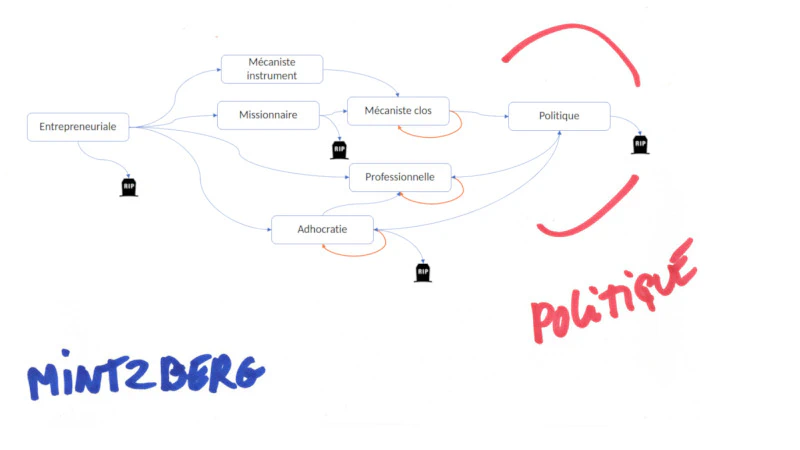
Thanks to meetups with Laurent Morisseau, I discovered Mintzberg (late therefore). On this diagram (which comes from here) what matters most to me is to highlight that the life cycle of companies potentially ends with the “political” stage. At the start a company is interested in conveying a message, revolutionizing a domain, then it moves toward a service, or product, or industrial approach, to finally potentially shift into the “political” stage. When you’re a service company, you question your services, a product company your products, a company with an industrial approach, your industrial approach, when you’ve become a political company, your questions focus on internal matters: who will take what power? What will we (internally) think of the success or failure of this project, how can I ensure my (internal) career advances properly, how can I ensure that after my three years as president I can bounce back easily, etc. In this context the entire agile approach and the complexity of the world come into conflict with internal political interest. And again how to avoid, simulate, control…
The good news? A shock can shift political companies toward earlier stages (service, product, industry, etc.). What’s a shock? Covid? A buyout? A management change? Disrupted competition? etc.
18 You should really try
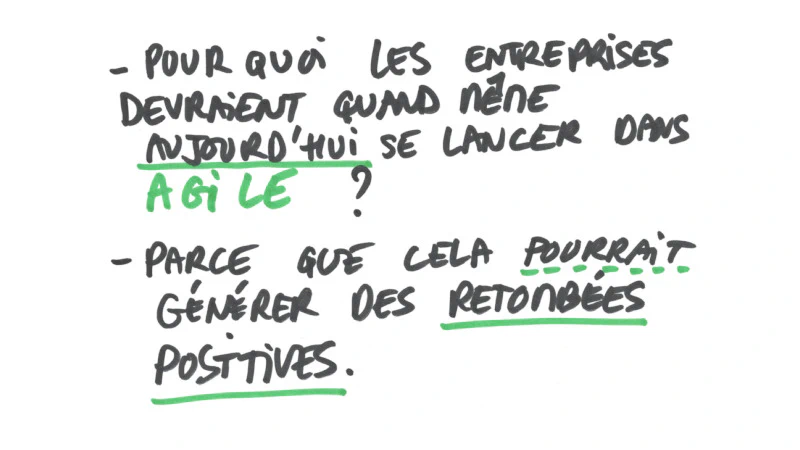
It’s sad, because companies over 20 years old could really benefit from an approach, from a more agile culture. It’s still today the appropriate response to the world in which we live to be performant.
So why don’t they really try?
19 Courage?
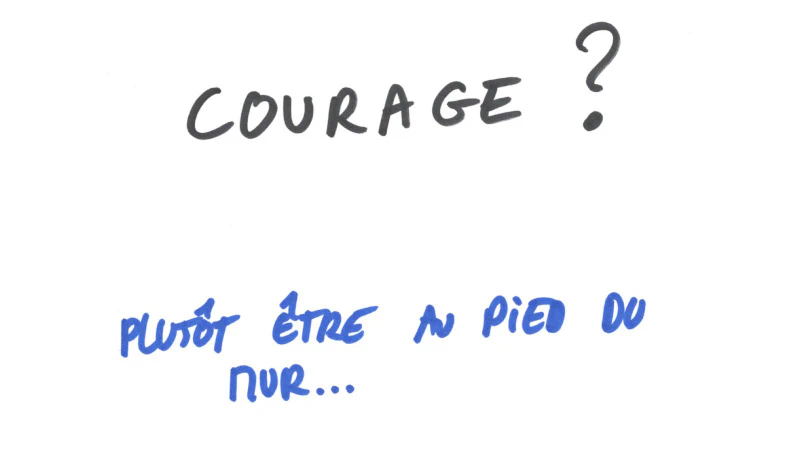
Lack of courage? I don’t think so. In adversity or in their desire NOT to go toward these approaches, courage is already needed. In any case I haven’t observed cases where suddenly courage changed the game. I’d rather say that these top managers (because we agree it’s the big bosses who have the keys) must be backed against the wall, confronted with risk. If I caricature: middle management must be reassured (because it’s them whose pattern is most disrupted), top management insecured (otherwise nothing will make them let go of their prerogatives).
20 Unlearning
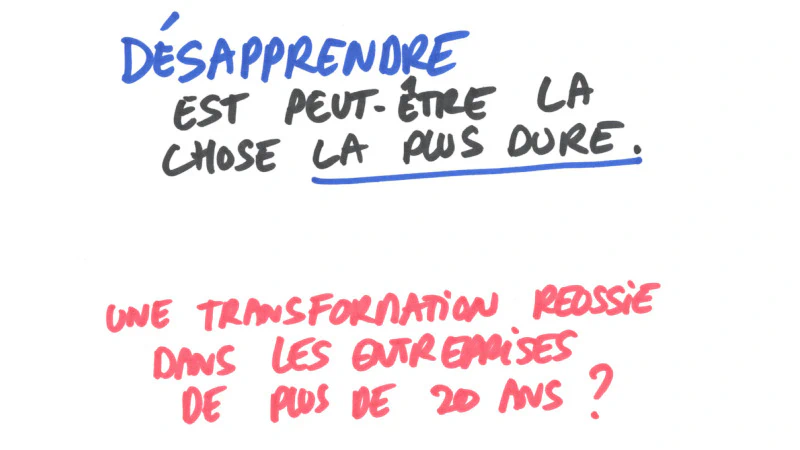
Why focus on “companies over twenty years old”. A conviction I learned from Keith Wyatt, “my” guitar teacher at artist works, unlearning is much harder than learning. Unlearning is the hardest thing, going against what we learned, what we believe in. That’s why it’s indeed companies marked by convictions, and a past that are subject to this flight, this avoidance, this denial. For them the effort is enormous. Constantly changing for a company like benext was isn’t so difficult: we grow, we expand, our practices and our culture evolve together. Imagine benext at 1000 people and with 15 years behind us and ask us to change, it would be another story.
On the other hand companies over twenty years old as I mentioned appeared when the complexity of the world wasn’t yet as marked and didn’t yet require as marked an “agile” response as today.
21 Suspend
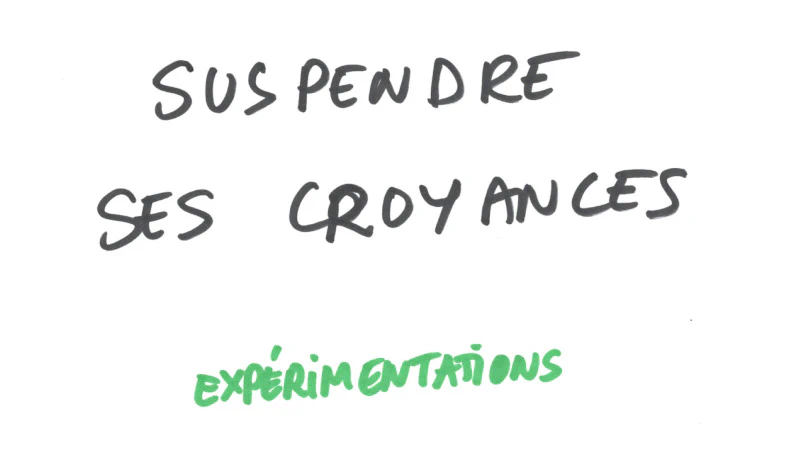
A chance to not lock oneself into one’s convictions and to unlearn despite everything is to know how to suspend one’s beliefs. For this the word “experimentation” is key. An experimentation remains over a fairly short time and if it doesn’t work we know or we think we can go back. We thus dare to suspend our beliefs, an experimentation authorizes it.
22 Paradox
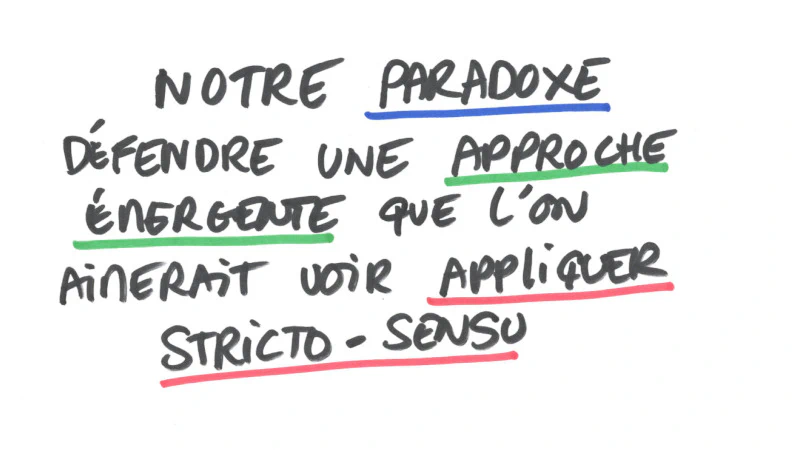
Higher up we said you couldn’t, you shouldn’t pick where you please your practices if it’s not done with coherence. Here’s something quite paradoxical for presenting an approach that wants to be emergent, adaptive and that advocates autonomy. Here’s our paradox. We’d like to tell people: no no you don’t do with it what you want, and at the same time we explain emergence and adaptation to them. Enough to drive you crazy. It’s a paradoxical injunction from which it’s difficult to escape. Ideally we’d like each group, entity, department, to try “to the letter” the approach to really understand the principles, and then free to adapt them to what it is. Unfortunately we often must adapt immediately to tame the constraints of the group, entity, department.
But if you pick from what suits you without really seeking coherence nor perceiving the underlying principles…good luck!
23 Luck
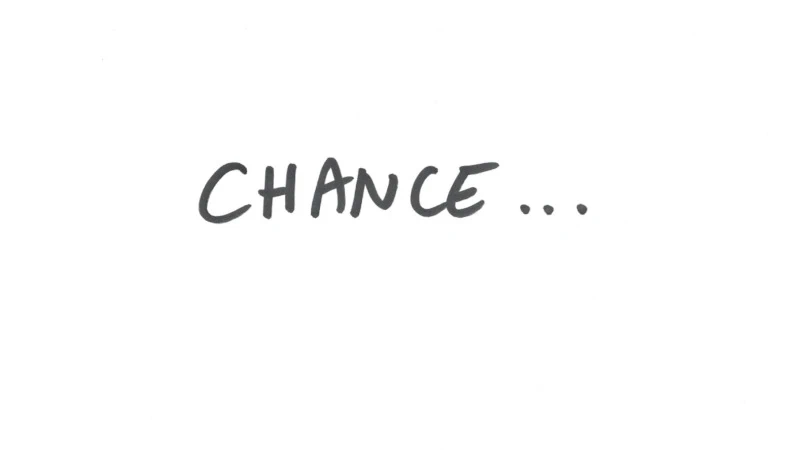
Luck precisely would we need it? Yes in this entanglement it’s certainly needed.
24 The “good” coaches, the “good” readings
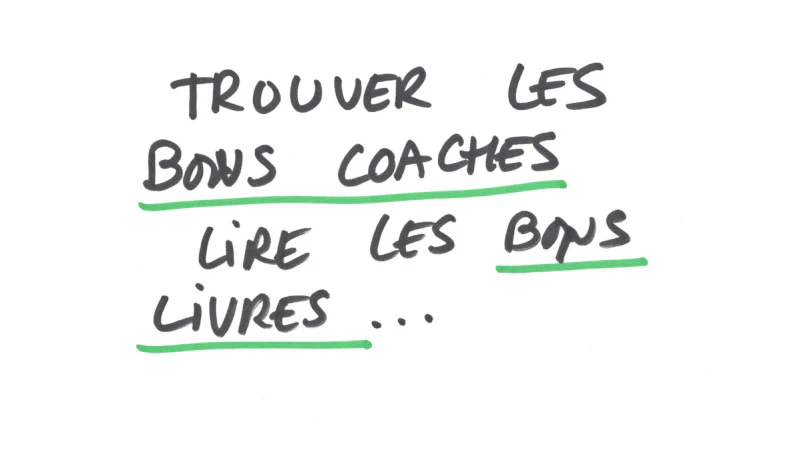
We talk a lot about companies that avoid, simulate, try to control, we talk less about what we offer in support. It’s no more glorious. Yes you can come across bad coaches. Not bad people, bad coaches. There are plenty (as there are plenty of good ones).
Fortunately we’re never a bad coach all the time and forever, either it’s cyclical, or we can change, cross stages, evolve.
What bothers me more is the drifts associated with the blockages generated by companies. Imagine the walls that coaches hit in companies. It’s a very difficult job if it wants to be done with rigor. But companies simulate, avoid, try to control. The position becomes untenable you must spare yourself, find yourself an escape. And then flourish sketchnoting, icebreakers, absurd titles, an incomprehensible logorrhea of gamification everywhere. I understand it, but I don’t support it. It distracts from our role, from our objective. It tarnishes our image and therefore our credibility. Yes to icebreakers as appropriate, and for them to fulfill the role of icebreaker and no more. No for them to become the alpha and omega of our action and our discourse, same for the rest, serious game and consorts.
You’ll take this as an attack, it’s a defense, we’re worn out and we’re ashamed.
25 Too much substance kills substance
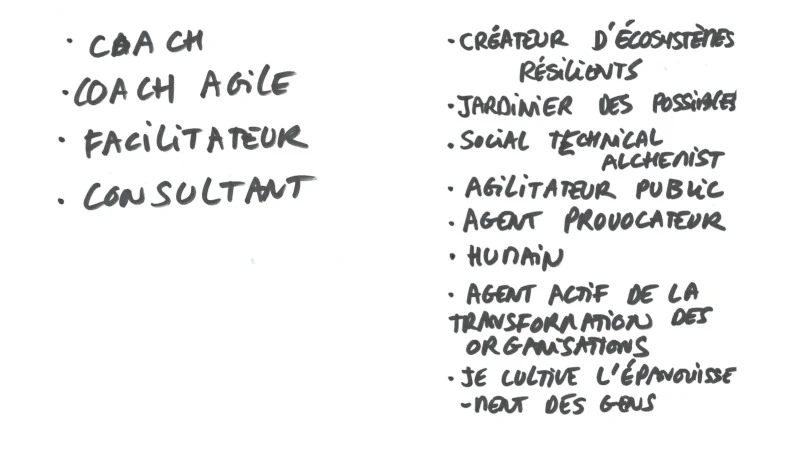
Okay hearing that you need to escape, okay to hear that you need to stand out, okay to understand that you feel better if you say you’re so particular. But please, let’s avoid these pompous titles that discredit us in the field. Here’s a selection of which I was part which indicates that all is not lost :)
26 Sketchnoting
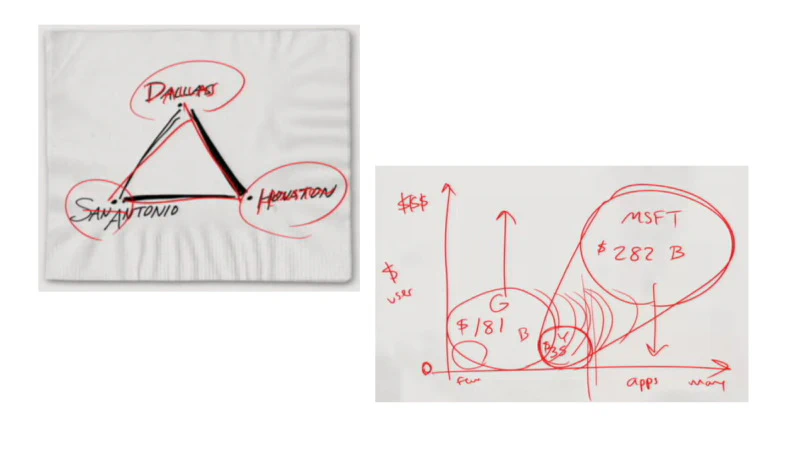
Here’s what sketchnoting looked like as triggered by Dan Roam (I recommend “unfolding the napkin”), a visual exercise to articulate conversations on its essential points.
27 Gibberish
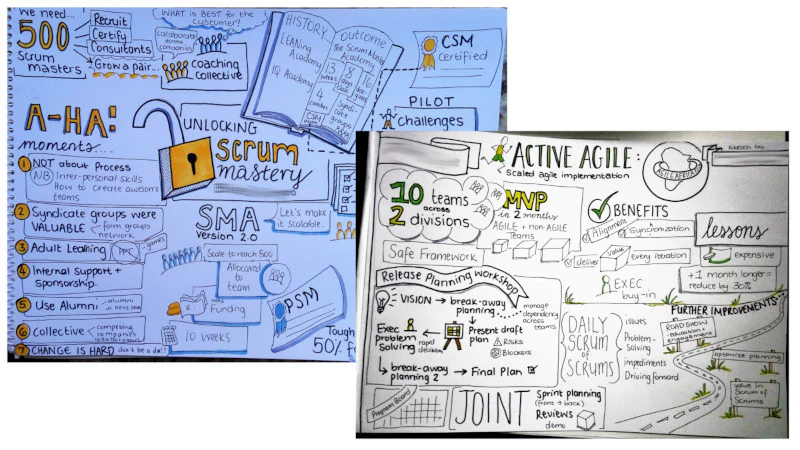
Here’s what it’s become: incomprehensible and useless gibberish (except for the one who draws it, for their memory, I suppose). Again: what’s the point? What’s the rigor behind it? What’s the foundation?
I see in it a cry of despair before the wall of fake companies that rise up against coaches.
28 Hearse
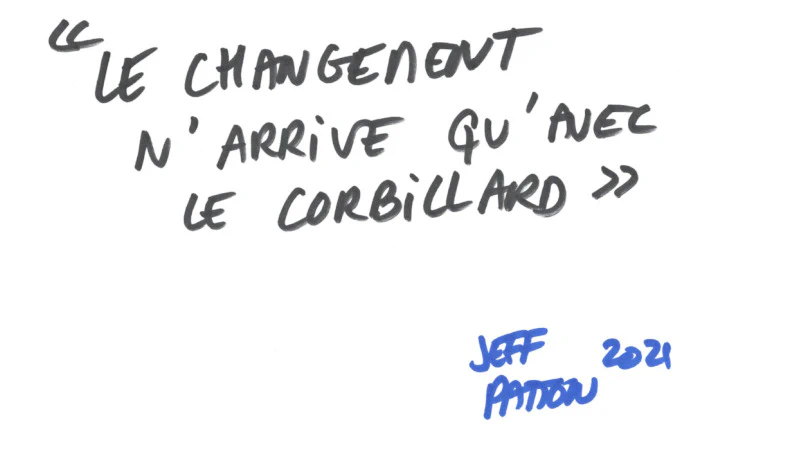
All this isn’t very optimistic. And I won’t help by recounting my conversation with Jeff Patton during School of Product 2021. He was hanging around in the hallways like me, and Dragos had us meet. He turns to me and asks: “and you how are you coping”, I sigh and I say “pfff it’s hard”. He explains that for him too. We too hit the same wall. He comes to ask me to try to translate with him this maxim for his presentation: “change will come with the hearse”. Yes a good part of the change will come from the disappearance of certain leaders who block the situation too much.
29 Life expectancy of companies
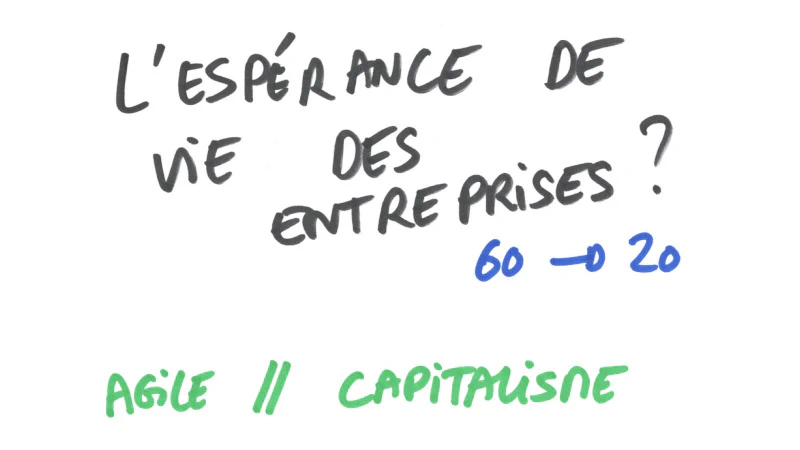
Another similar factor could play its role, the life expectancy of companies. The figures seem to indicate it went from 60 years to 20 years in a century. But twenty years is still long. And maybe the large structures over twenty years old that we mention are too big to fail, that they’ve become structurally too important for the State (which would be damaging)?
I tell myself they could implode, because are they still succeeding in hiring?
(A parenthesis on agility which a perfect response to capitalism, so that companies respond well to the capitalist world that surrounds us. Let’s not fool ourselves. And as this thought haunts me, I come across the book Scarlett Salman).
30 Key points
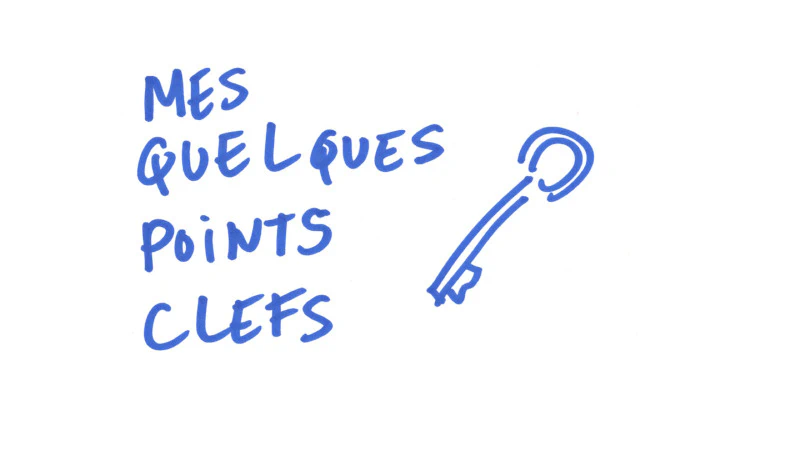
So if I had to refocus on a few key points.
31 Look at the last 3 or 4 months
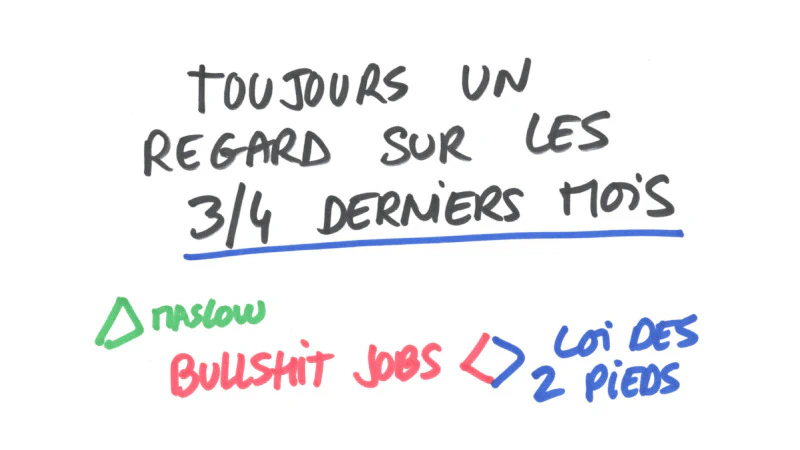
I estimate that before having an opinion it takes time, and generally three or four months seem an adequate duration to me. You can have a first opinion in a few days, but for a real opinion three or four months seem necessary to me. I always regret when a coach wraps themselves in pride and arrogance and decides to leave after a month (or a week), because “the other”, “the client”, isn’t “up to par”. Evolving in the muck: in an environment far from perfect that’s our daily life, but it’s also our reason for being in 90% of cases, helping to get out of this muck. And thus it seems to me that three or four months are necessary to form an idea. If really the attitude and intention aren’t there, you can leave after three or four months. And you maintain this time slice in a sliding manner: if the last three or four months showed no progress, you leave.
You must know to leave when you’re not bringing anything, or when the environment isn’t listening and isn’t offering anything. It’s the law of two feet that we apply to ourselves. At the same time (Maslow’s pyramid) I can’t hold it against those who stay at all costs, even becoming a bullshit job (read David Graeber!) when it’s above all about preserving a base: roof, food, social relations, etc.
32 Basic != foundation
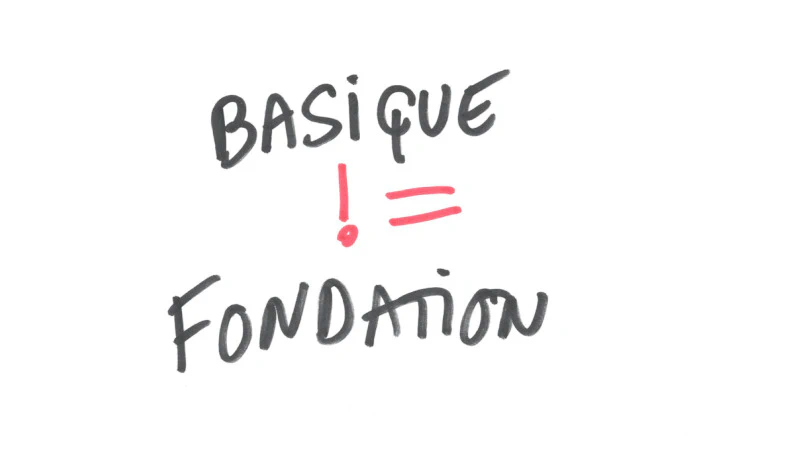
Once again, rigor seems indispensable to me. That of constantly questioning one’s words, one’s acts, and seeing beyond appearances to focus on foundations. Again, you can accomplish plenty of superficial things if they’re necessary to the path toward something, if they’re the passage and not the destination. But let this path not last too long. Like a cast on a leg…
33 Too much pathos
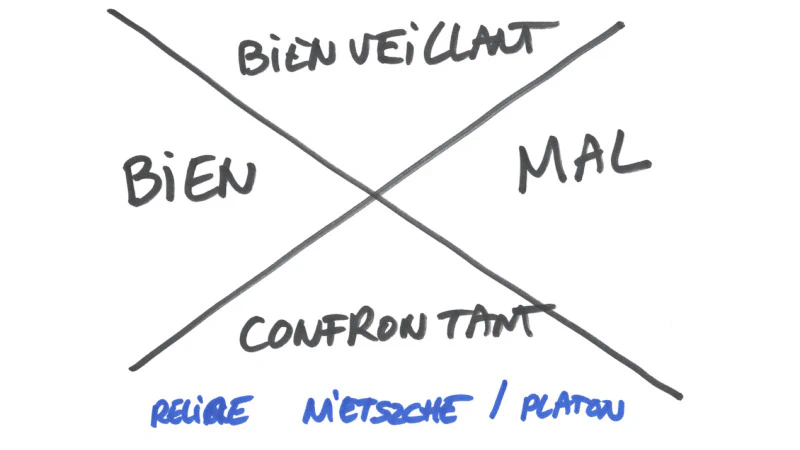
Too often we oppose benevolent and confronting, good and evil. It’s too simplistic. I recommend reading (and it’s not pompous) “Beyond Good and Evil” by Nietzsche and “Charmides” (for example) by Plato. In the first he reminds us that things are complex (with dynamic, simple writing), and that good doesn’t necessarily come from doing good, that being confronting, or in opposition, or by not seeking comfort, the soft, the clean, brings its share of good. That “good” also brings its share of evil. Personally I don’t seek for my interventions to be good, or successful, or benevolent, I seek to make them achieve their objectives. And quite often I discover that after a tough seminar, it worked much better than an indulgent and complacent seminar. Another way to call for an end to the tyranny of these messages dripping with pathos around benevolence. In the second, we observe Socrates through Plato’s words. Socrates, maieutics, the art of delivering through words. Well, don’t forget that childbirth is a moment of suffering, with blood and screams. In Socrates’ words much teasing, even mockery, provocations, bullying. It’s not the peaceful river that people who wrap themselves in injunctions to sympathy seem to evoke. Socrates unsettles, Nietzsche unsettles.
Be confronting.
34 Questions
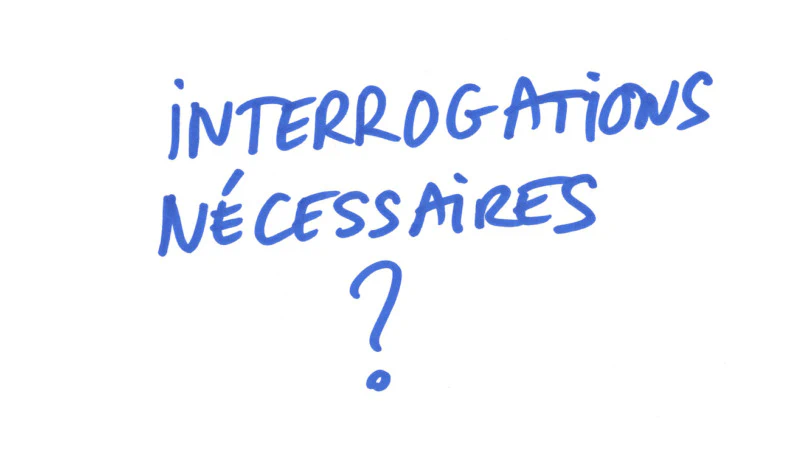
To respond to this rigor, I ask myself certain questions. I propose them to you. The idea is really to raise our level of rigor.
35 For whom?
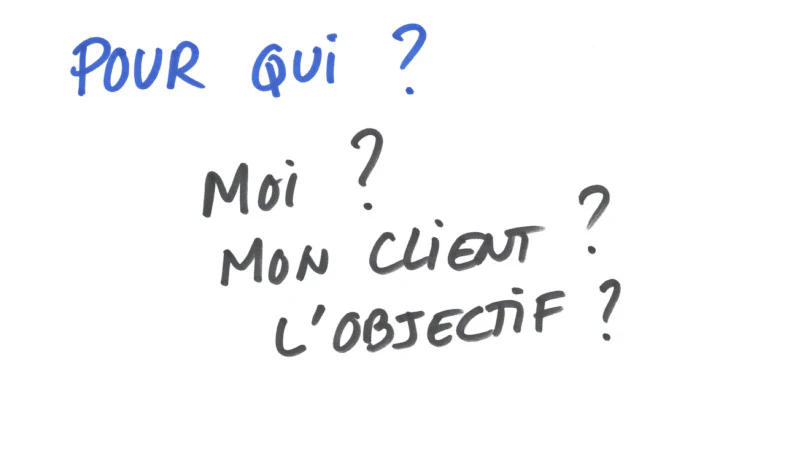
For whom am I triggering such or such workshop? Such or such action? Such or such proposal? Who is the real subject?
Me, myself the coach?
Client, my client?
The objective of the support?
I may need to trigger things for me, or for my client (to gain their trust, to give them assurance, etc.), but I should very predominantly try to work for the objective.
36 At what level?
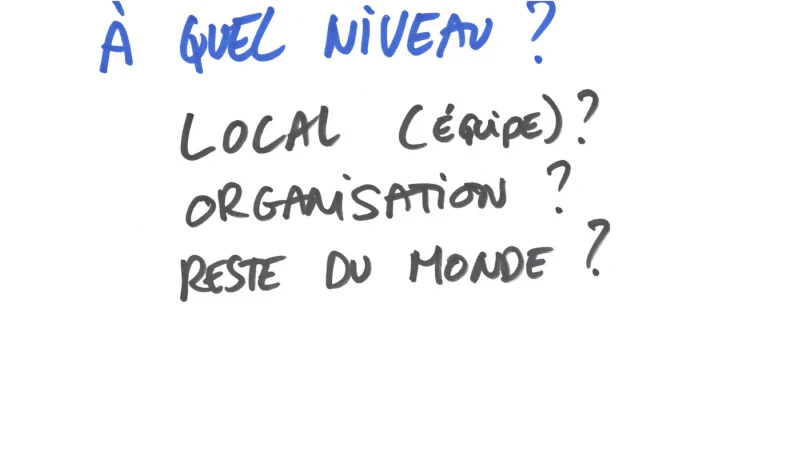
At what level am I intervening, for what level am I intervening? Better: where do I want to have a resonance chamber?
Local: within a team.
organization: at the organization level, the department, a set of teams.
global: globally, everywhere, beyond the organization.
For example: I might want to have a global impact: to support my local action, to support sponsorship. But if that’s all I have a problem.
37 Embryonic matrix
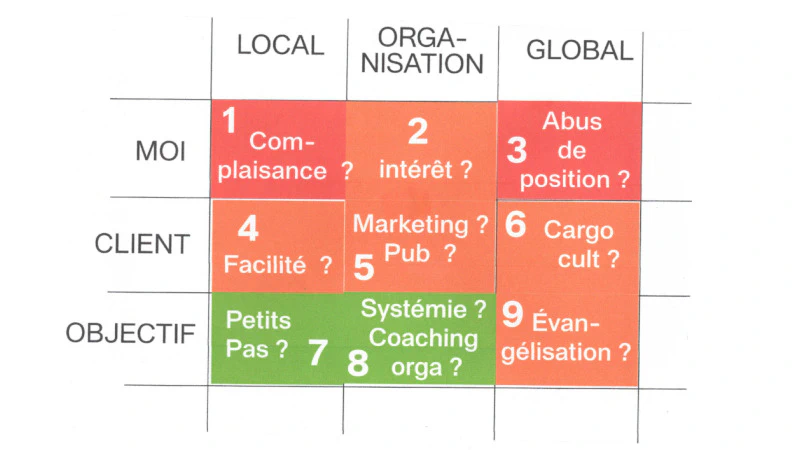
From these reflections which are at the embryonic stage, I tried to question myself on a matrix and its reading. Again it’s the questioning about my rigor that helps me. Here are the first few proposals, they’re very improvable.
(taken from Agility, critical look at recent years to properly start the following ones)
1
I’m trying to do good for myself by relying on a local context? Be vigilant! Too much pleasure principle, and possible ease. Beware of complacency? Example: I do my workshop X because I like it.
2
I’m trying to do good for myself by relying on an organization context? Pleasure principle? What’s the interest? Is it waste? Example: I do my workshop X because I like it and I spread it in the organization.
3
I’m trying to do good for myself by radiating on a global level? Pleasure principle, I reproduce what I see elsewhere for me? Is it abuse of position? Example: I do this workshop X that I like and that does me good on the global level: I fit into the global movement by communicating about it (blog, twitter, etc.).
4
I’m trying to do good for the client by relying on a local context? Great vigilance, too much possible ease? Am I seducing them without having added value? Example: I perform this action, this workshop to satisfy the client’s expectations even though it’s not what they need.
5
I’m trying to do good for the client by relying on an organization context? Marketing? Advertising? Am I promoting myself? Example: I perform this action, this workshop to satisfy the client’s expectations in the whole organization even if it’s not what it needs.
6
I’m trying to do good for the client by radiating on a global level? Cargo cult? I replicate without understanding or adapting, to satisfy. Is it reassuring imitation? A recipe applied without more? Example: I perform this action, this workshop to satisfy what’s done elsewhere in the contexts I hear about.
7
I’m trying to do good for the objective by relying on a local context? Even on a small scale it’s good to serve the objective. It’s a small step and no one knows if its value won’t be colossal. Example: I try to perform an action, a workshop, that moves a little toward the objective.
8
I’m trying to do good for the objective at the level of an organization context? A real systemic approach. Example: I try to perform an action, workshops, that move the organization toward the objective.
9
I’m trying to do good for the objective by radiating on a global level, beyond the organization. Difficult to understand. It’s more the global movement that will benefit from achieving the objective. Evangelization?
38 Thank you
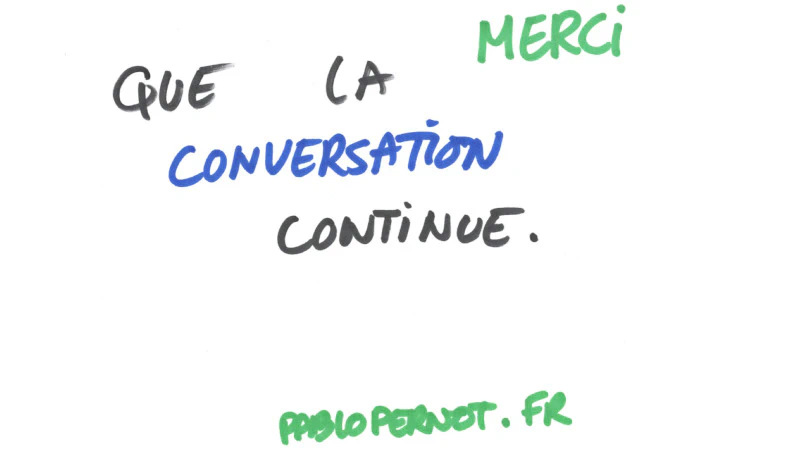
Thank you!